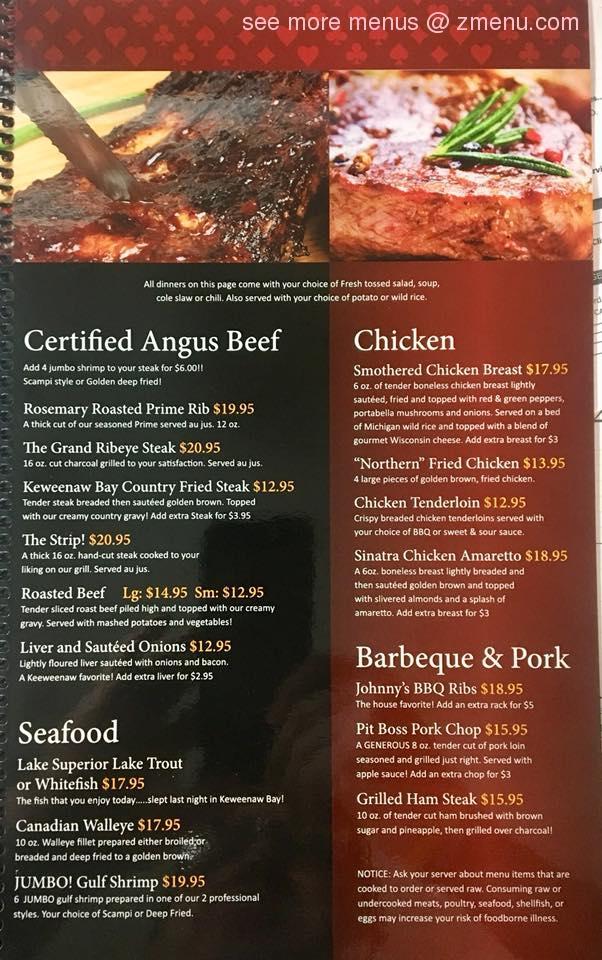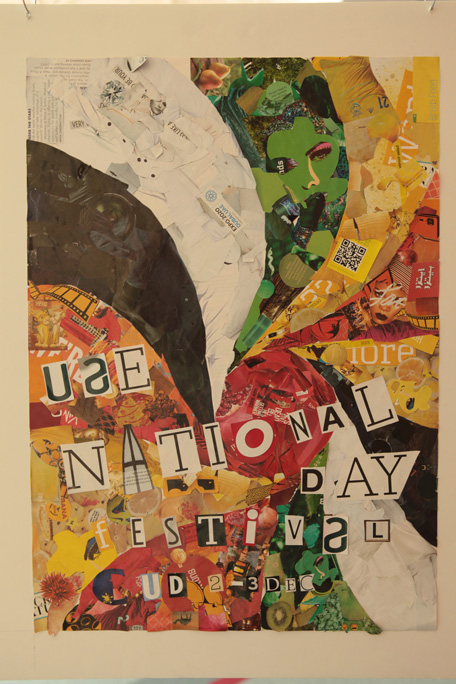The information binding is dependent upon an occasion of the DataBindingSource interface created by an occasion of the DataBindingSourceCreator interface. The specific implementation of DataBindingSourceCreator shall be chosen based on the contentType of the request. Several implementations are supplied to deal with frequent content material sorts. The following desk lists the content material types that are supported by the core framework and which DataBindingSourceCreator implementations are used for each. All of the implementation courses are within the org.grails.databinding.bindingsource package deal. The application writer is generally concerned with offering controller courses which deal with the concern of routing HTTP requests to Java strategies , and service lessons which implement HTTP-agnostic business logic. An HttpMessageConverter implementation that may read and write Atom feeds from the HTTP request and response using Android ROME Feed Reader. The data is learn from and written into a com.google.code.rome.android.repackaged.com.solar.syndication.feed.atom.Feed. An HttpMessageConverter implementation that may read and write RSS feeds from the HTTP request and response using Android ROME Feed Reader. The data is learn from and written into a com.google.code.rome.android.repackaged.com.solar.syndication.feed.rss.Channel. An HttpMessageConverter implementation that may read and write RSS and Atom feeds from the HTTP request and response using Android ROME Feed Reader. The data is read from and written into a com.google.code.rome.android.repackaged.com.sun.syndication.feed.synd.SyndFeed. By default, this converter supports application/rss+xml and application/atom+xml. The RestTemplate class is the center of the Spring for Android RestTemplate library. It is conceptually similar to other template lessons found in other Spring portfolio tasks. RestTemplate's behavior is custom-made by offering callback strategies and configuring the HttpMessageConverter used to marshal objects into the HTTP request physique and to unmarshal any response back into an object. When you create a new RestTemplate instance, the constructor sets up several supporting objects that make up the RestTemplate functionality.
All REST technique examples in this article are carried out with Spring Framework. ResponseEntity is available since Spring three.zero.2, which assist to set response with headers, physique and standing code (it's an extension of HttpEntity that adds a HttpStatus standing code). The examples will solely focusing on what to return, not the entire operate in real-life "enterprise" REST APIs. So, we will not drill down unto different space like database access, services, and so on. An HttpMessageConverter implementation that may learn and write JSON using Google Gson's Gson class. JSON mapping can be personalized as wanted through the usage of Gson's offered annotations. When further management is needed, a customized Gson could be injected through the Gson property for circumstances the place custom JSON serializers/deserializers must be supplied for particular types. To work together with REST, the client must create a shopper occasion and request object, execute the request, interpret the response, map the response to area objects, and also handle the exceptions. It is widespread for the Spring framework to each create an API and devour inside or external application's APIs. This advantage additionally helps us in the growth of microservices. To avoid such boilerplate code Spring provides a handy approach to consume REST APIs – through 'RestTemplate'.
Method addBook(...) is annotated with @PostMapping, mapping HTTP POST requests onto specific handler strategies. After successful creation of a useful resource, HTTP response code 201 is returned with Book information within the response body , with 'Location' set within the header. An HttpMessageConverter implementation that can learn and write JSON using Jackson (2.x)'s ObjectMapper. JSON mapping could be customized as wanted by way of the use of Jackson's provided annotations. When additional management is required, a customized ObjectMapper can be injected via the ObjectMapper property for circumstances where customized JSON serializers/deserializers must be supplied for particular types. An HttpMessageConverter implementation that can read and write javax.xml.rework.Source from the HTTP request and response. By default, this converter helps text/xml and application/xml. The names of RestTemplate methods observe a naming convention, the primary part indicates what HTTP methodology is being invoked and the second half signifies what's returned. For example, the tactic getForObject() will carry out a GET, convert the HTTP response into an object sort of your alternative and return that object. The method postForLocation() will do a POST, changing the given object into a HTTP request and return the response HTTP Location header where the newly created object can be discovered. In case of an exception processing the HTTP request, an exception of the sort RestClientException will be thrown.
This conduct could be changed by plugging in another ResponseErrorHandler implementation into the RestTemplate. Then add this header to the request headers when creating a model new publish, it return a profitable CREATED status, and the new created post could be located through Location header within the response. Returns a request callback implementation that prepares the request Acceptheaders based mostly on the given response kind and configured message converters. In order to provide your individual DataBindingSourceCreator for any of these content material types, write a class which implementsDataBindingSourceCreator and register an instance of that class in the Spring software context. If you would possibly be replacing one of the current helpers, use the corresponding bean name from above. Grails supports overriding the request methodology via the hidden _method parameter. This is helpful when using restful useful resource mappings to create powerful internet interfaces. To make a link fire this sort of event, maybe capture all click on events for hyperlinks with a data-method attribute and problem a form submit by way of JavaScript. File Package Description RestConstants.java bbdn.rest This class accommodates Constant values for operating the code. RestDemo.java bbdn.rest This class is the primary class for the project. We will talk about different classes as we transfer them into place, but that is the one file we are going to modify. UnSecurityUtil.java bbdn.unsecurity This class permits us to create a RestTemplate object based mostly on whether we are testing on the DVM or in an setting with a sound SSL certificates. In this spring resttemplate example, we learned to pass basic authentication by way of "Authorization" header while accessing rest api. First step is to include required dependencies e.g. spring-boot-starter-web and httpclient. HTTP compresses the message physique before sending it and un-compresses it at arrival. If present, the Content-Length header shows the number of the particular bytes sent. Similarly, chunking is applied to the already compressed stream of bytes . Since compression is optionally available in HTTP 1.1, clients must listing the compression algorithms they help in the Accept-Encoding header to obtain compressed messages.
Likewise, REST services should not ship compressed content material until the consumer is ready to obtain it. Compressed messages are sent with a Content-Encoding header figuring out the compression algorithm used. Please notice that this message converter and the MappingJackson2HttpMessageConverter each assist application/json by default. Because of this, you should solely add one JSON message converter to a RestTemplate occasion. RestTemplate will use the primary converter it finds that matches the desired mime kind, so together with both might produce unintended outcomes. Please note that this message converter and the GsonHttpMessageConverter both help application/json by default. The default constructor doesn't embrace any message physique converters. You must add a message converter when using the default constructor. If you wish to embrace a default set of message converters with a brand new RestTemplate instance, then you'll be able to move true for the includeDefaultConverters parameter. For an inventory of default converters, see the HTTP Message Conversion part.
Additionally, if you want to specify a unique ClientHttpRequestFactory then you are able to do so by passing it in to the requestFactory parameter. A declarative HTTP client can be written by including the @Client annotation to any interface or abstract class. Using Micronaut's AOP help , the abstract or interface methods shall be implemented for you at compilation time as HTTP calls. Declarative shoppers can return data-bound POGOs without requiring particular dealing with from the calling code. By default the getObjectToBind() technique returns the request object. Subclasses of RestfulController could override the getObjectToBind() method and return something that could be a valid binding supply, including a Map or a DataBindingSource. For most use instances binding the request is appropriate however the getObjectToBind() methodology allows for altering that behavior where desired. Spring Boot makes the event of Spring-based functions so much simpler than ever earlier than, and it mechanically returns acceptable standing codes. If the request went via simply nice, a 200 OK is returned, while a 404 Not Found is returned if the resource is not found on the server. Information about an error message, a path, and a requested worth shall be returned to the person.
Gzip compression can considerably scale back the scale of the response information being returned in a REST request. Gzip must be supported by the web server to which the request is being made. By setting the content material coding sort of the Accept-Encoding header to gzip, you are requesting that the server reply using gzip compression. If gzip is on the market, or enabled on the server, then it ought to return a compressed response. RestTemplate checks the Content-Encoding header in the response to determine if, in fact, the response is gzip compressed. At this time, RestTemplate only helps the gzip content coding type within the Content-Encoding header. If the response knowledge is decided to be gzip compressed, then a GZIPInputStream is used to decompress it. Here instead of coping with the output object only, we've retrieved a representation of the HTTP response. The responseEntity class provides us access to headers and Status whereas the getBody methodology gives the output object.This object is generated by Spring's message converters from the actual response stream. And when including an embedded RDBMS, corresponding to H2 in the check classpath, it will bypass the actual database configuration within the application properties and use the embedded database as a substitute when working the tests. And we are going to handle this exception in a common class annotated with @RestControllerAdvice. When a PostNotFoundException is caught, notFound technique will deal with it convert the exception to a friendly message physique and return a HTTP 404 standing code to the shopper. If you need your HTTP response to include a CSV header row, annotate the stream element class with @CsvHeader("COL_1", "COL_2", ...).
Note that the restriction of this design is that an empty outcome set won't have the header row as a result of I read this off the primary instance within the Stream. WebRequestDataBinder - Class in org.springframework.net.bind.supportSpecial DataBinder to carry out data binding from internet request parameters to JavaBeans, together with help for multipart recordsdata. Org.springframework.net.bind.annotation - bundle org.springframework.web.bind.annotationAnnotations for binding requests to controllers and handler strategies as nicely as for binding request parameters to method arguments. Org.springframework.internet.settle for - bundle org.springframework.net.acceptThis bundle accommodates courses used to discover out the requested the media types in a request. AbstractMappingContentNegotiationStrategy - Class in org.springframework.web.acceptBase class for ContentNegotiationStrategy implementations with the steps to resolve a request to media varieties. AbstractRequestBodyDataBindingSourceCreatoris an abstract class designed to be extended to simplify writing customized DataBindingSourceCreator lessons. The InputStream argument to createBindingSourceprovides entry to the body of the request. The greatest change on this profile is that the profile creates a multi project gradle build. The Angular profile relies on the Angular CLI to handle the client aspect software. The server side software is identical as an application created with the rest-api profile. Learn to add primary authentication to http requests invoked by Spring RestTemplate while accessing rest apis over the network.
REST message examples are always shown in documentation with fundamental message framing because it's easy to read. Nonetheless, many real-life REST protocols use a combination of chunking, compression, and multipart encoding for higher efficiency. When you develop REST clients, keep in thoughts that compression and multipart encoding are elective. REST services won't use them until the client sends them the proper Accept and Accept-Encoding headers. When you design REST services, contemplate compressing giant messages to save lots of bandwidth and using multipart messages to minimize back protocol chattiness. When using the alternate RestTemplate constructor, the default converter instances registered with the template are ByteArrayHttpMessageConverter, StringHttpMessageConverter, and ResourceHttpMessageConverter. If your app is operating on Android 2.2 or later, then XmlAwareFormHttpMessageConverter and SourceHttpMessageConverter are registered, as these two message converters require javax.xml.transform.Source. On Android 2.1, this falls back to the FormHttpMessageConverter which lacks a few of the XML help in the different two. According to the REST convention and HTTP protocol, a HTTP POST Method is used to create a new resource, it could return a 201 HTTP status code with the model new created resource URI as HTTP header Location. And for update and delete operations on resource, return a 204 HTTP status. For this I even have used an existing Spring project; I chose a Stream-returning method and added one other which is strictly the same in each respect, besides it returns a List. I also took care to disable the OpenSessionInViewInterceptor for the list-returning methodology to get the realistic setting for a project with out holdable end result units. I used VisualVM and its VisualGC plugin to monitor the heap exercise while the REST request was in progress. Another workaround was to simply refuse to serve giant responses, requiring the consumer to problem requests for a limited vary of information, issuing as many requests as needed to retrieve the entire dataset. This resulted each in the loss of atomicity and an general increase of the server load as a outcome of the database must compute all the end result rows previous the primary row of the requested vary. UrlBasedCorsConfigurationSource - Class in org.springframework.internet.cors.reactiveProvide a per reactive request CorsConfiguration occasion primarily based on a collection of CorsConfiguration mapped on path patterns. Org.springframework.net.server.session - bundle org.springframework.web.server.sessionAuxiliary interfaces and implementation courses for WebSession assist. Org.springframework.net.context.request - package deal org.springframework.net.context.requestSupport for generic request context holding, particularly for scoping of software objects per HTTP request or HTTP session. MultipartHttpServletRequest - Interface in org.springframework.internet.multipartProvides extra methods for coping with multipart content inside a servlet request, allowing to access uploaded recordsdata.
HandlerMethodArgumentResolver - Interface in org.springframework.web.methodology.supportStrategy interface for resolving technique parameters into argument values in the context of a given request. ContentNegotiationManager - Class in org.springframework.internet.acceptCentral class to determine requested media typesfor a request. AbstractListenerServerHttpResponse - Class in org.springframework.http.server.reactiveAbstract base class for listener-based server responses, e.g. In the case of HTML the 'create' view will be rendered again so the user can appropriate the invalid input. In the case of other codecs (JSON, XML etc.), the errors object itself might be rendered in the applicable format and a standing code of 422 returned. This class handles the REST calls, all object generation and retrieval, and passing info again to our main class. When the class is initialized, we arrange logging and ensure the handler has the right hostname. Each operation has its personal method that generates the suitable physique if needed, then passes the required data to the sendRequest technique to ship the suitable message and retrieve the suitable response. The first step was to put our Term object in place, along with its companion Availability object. This object is definitely re-used by different lessons we will implement in the final step. These objects are configured to allow the Jackson library to mechanically serialize and deserialize our JSON payloads. It provides the fundamental properties that correspond on to the JSON payload we count on to obtain from Blackboard Learn after we manipulate a time period. Once we've created and populated this object, we can then entry this data every time we have to.






























































